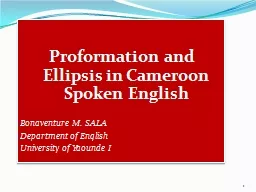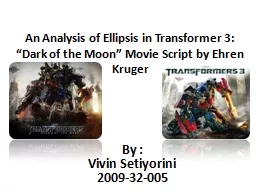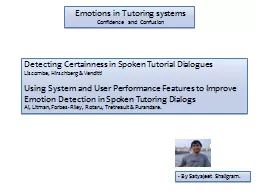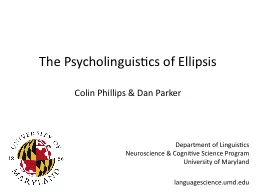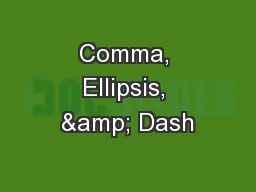PPT-1 Proformation and Ellipsis in Cameroon Spoken English
Author : ginocrossed | Published Date : 2020-10-22
Bonaventure M SALA Department of English University of Yaounde I Outline Preliminaries Background Design and Method Ellipsis in CamE Proforms in CamE Raw data
Presentation Embed Code
Download Presentation
Download Presentation The PPT/PDF document "1 Proformation and Ellipsis in Cameroon..." is the property of its rightful owner. Permission is granted to download and print the materials on this website for personal, non-commercial use only, and to display it on your personal computer provided you do not modify the materials and that you retain all copyright notices contained in the materials. By downloading content from our website, you accept the terms of this agreement.
1 Proformation and Ellipsis in Cameroon Spoken English: Transcript
Download Rules Of Document
"1 Proformation and Ellipsis in Cameroon Spoken English"The content belongs to its owner. You may download and print it for personal use, without modification, and keep all copyright notices. By downloading, you agree to these terms.
Related Documents

